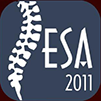Subject Area
Deformity
Article Type
Original Study
Abstract
Background Data: Although long-segment spinal fusion is well-established in achieving coronal balance in scoliotic deformities, its ability to achieve sagittal balance is variable. In some patients, the fusion needs to be extended to the sacrum/pelvis, which could be challenging. Purpose: This study aimed to compare the sagittal balance of adolescent idiopathic scoliosis (AIS) and congenital scoliosis (CS) patients after posterior spinal fusion and to assess the effect of extending the fusion to the sacrum/pelvis on sagittal balance. Study Design: Retrospective cohort study. Patients and Methods: The study protocol was approved by our institution review board. All available AIS and CS patients who underwent long-segment posterior spinal fusion were included in this study. Whole spine radiographs were taken at three time points: preoperative, 2-months postoperative, and at 2-year follow-up. The spinopelvic parameters were measured in lateral views. The fusion to the sacrum/pelvis was also recorded. Comparison of the radiological parameters at the three time points between the AIS and CS patients and those with and without fusion to the sacrum/pelvis was performed. Results: The sagittal vertical axis was significantly higher in CS patients with fusion to the sacrum/pelvis (53.4 mm postoperatively and 54.4 mm at follow-up) than in those without fusion (14.8 mm postoperatively and 11.9 mm at follow-up) and AIS patients with or without fusion to the sacrum/pelvis. In CS patients who needed fusion to the sacrum/pelvis, lumbar lordosis (LL) decreased significantly to 31° postoperatively and 34.1° at follow-up. Conclusion: AIS patients have a better chance to achieve a normal sagittal alignment than CS patients, especially if the fusion was extended to the sacrum. Patients with CS at the lumbar region have a retroverted pelvis, which is difficult to correct by posterior spinal fusion alone, and an additional posterior osteotomy may be needed to create an adequate LL matching their pelvic incidence. Saving a distal mobile segment preserves a compensatory mechanism and decreases the incidence of postoperative sagittal malalignment. (2020ESJ219)
Keywords
Sagittal balance, fusion to the sacrum/pelvis, Adolescent idiopathic scoliosis, AIS, Congenital scoliosis
How to Cite This Article
Gad, Wael; Elmorshidy, Essam; Hassan, Mohammad; El-Sabrout, Moataz; and El-Sharkawi, Mohammad
(2021)
"Sagittal Balance After Posterior Fusion in Adolescent Idiopathic Scoliosis Versus Congenital Scoliosis,"
Advanced Spine Journal: Vol. 38
:
Iss.
1
, Article 3.
Available at: https://doi.org/10.21608/esj.2021.65846.1174




















